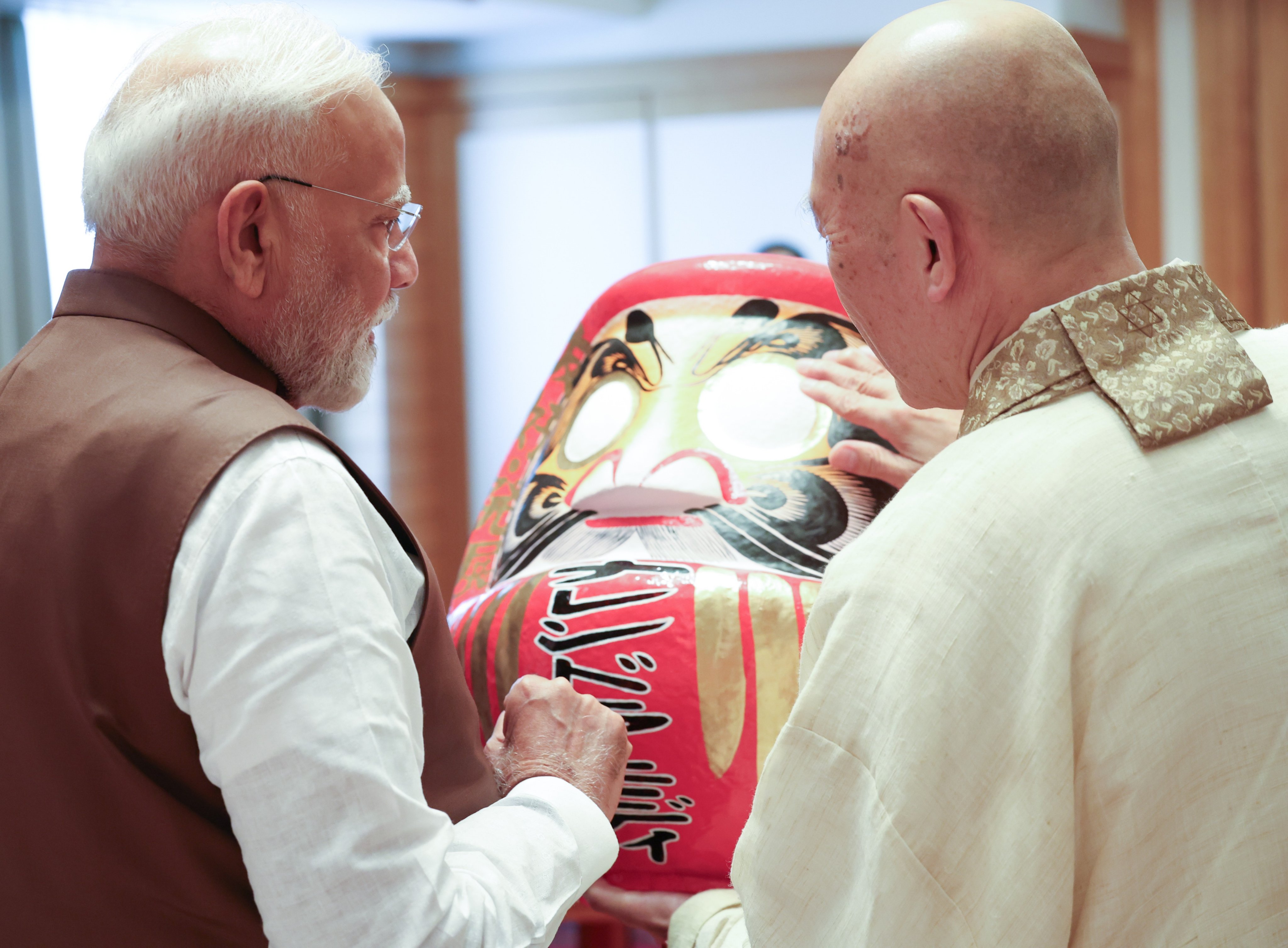Strategic Balance in the Indo-Pacific: India Strengthens Japan Ties as it Prepares to Engage China
As Prime Minister Narendra Modi concludes a high-impact diplomatic visit to Japan and prepares to travel to Tianjin for the Shanghai Cooperation Organisation (SCO) Summit, India’s regional balancing act has come sharply into focus. Amid strained ties with the United States over energy trade and tariffs, New Delhi is signalling a renewed intent to stabilise ties with Beijing--even as it accelerates strategic convergence with Tokyo.
 |
| Image Source: PM NaMo |
However, this year’s summit--held in Tokyo on August 29--carried added diplomatic weight. The leaders of India and Japan unveiled a 10-year strategic roadmap, signed key agreements in energy, innovation, and defence cooperation, and set an ambitious ¥10 trillion ($67 billion) investment target for the next decade.
The announcements came just days before Modi’s scheduled meeting with Chinese President Xi Jinping at the SCO Summit, underscoring a calibrated strategy aimed at balancing competing regional priorities.
In an interview to Yomiuri Shimbun, PM Modi stated that India and China, as two major Asian economies, must work together to bring stability to the global economic order, particularly amid volatility caused by new U.S. tariffs.
The Prime Minister also emphasised a readiness to engage China from a “strategic and long-term perspective,” suggesting an intent to manage differences without inflaming tensions.
His remarks echoed India’s recent pivot to diplomatic engagement with Beijing following a prolonged period of military and diplomatic strain post the 2020 Galwan Valley clashes.
The timing is notable. Washington has imposed sweeping 50% tariffs on Indian exports, citing New Delhi’s continued imports of Russian crude oil and defence equipment.
Indian officials have defended these purchases as necessary for national economic stability and compliance with international law.
In Tokyo, Modi avoided direct reference to Washington but sent a pointed message through action--strengthening partnerships with nations that offer economic depth, technological support, and geopolitical space.
The Japan visit achieved several key outcomes. Beyond the investment commitments, both sides announced a Joint Crediting Mechanism to support India’s green transition and launched the India–Japan Artificial Intelligence Initiative focused on large language models and governance.
They also formalised a Next Generation Mobility Partnership and signed agreements in space cooperation, notably on the Chandrayaan-5 LUPEX mission involving ISRO and JAXA.
In addition, a framework to exchange 500,000 professionals over five years--including 50,000 skilled Indian workers--was rolled out, underlining the depth of the bilateral economic and human capital engagement.
Strategically, the significance of these developments lies in the optics and timing.
The India–Japan partnership presents a regional counterbalance to China’s growing influence, especially given Tokyo and Beijing’s historically adversarial relationship.
According to multiple public surveys, public perceptions between Chinese and Japanese populations remain predominantly negative.
Tensions around World War II-era grievances, ongoing maritime disputes, and nationalist posturing continue to influence bilateral ties.
While India is seeking a reset with China, it is simultaneously reinforcing ties with Japan, which remains wary of Chinese regional ambitions.
In India’s calculus, cooperation with China--particularly in multilateral formats such as the SCO and BRICS--can offer practical gains in economic recovery and regional stability, but it cannot be at the expense of national security or strategic autonomy.
The cautious diplomatic language used by Indian officials in reference to China reflects this understanding.
India has consistently stressed that any forward movement must be based on mutual respect, mutual interest, and mutual sensitivity--a reference to long-standing border disputes and regional security frictions.
India’s choice to deepen cooperation with Japan days ahead of a critical China visit also sends a message to Beijing.
While New Delhi is open to dialogue and economic engagement, it is simultaneously anchoring itself in relationships that offer insulation from potential geopolitical or trade coercion.
The use of terms such as “Special Strategic and Global Partnership” with Japan and the emphasis on values-based cooperation reflect India’s effort to build a coalition of trusted partners in the Indo-Pacific.
At the same time, India has not closed the door to Washington. Indian officials continue to emphasise that they seek diversified partnerships, not replacements.
But the recent tariff moves, coupled with pointed public criticisms from former U.S. officials, have introduced friction into what had otherwise been a steadily advancing strategic relationship.
As India looks to protect its economic interests and assert its policy independence, it is turning to regional structures and like-minded partners to maintain leverage and stability.
In this context, the trilateral positioning of Modi’s interactions--with Japan, China, and Russia--during this diplomatic tour takes on a layered strategic meaning.
India’s visible presence at the SCO Summit, alongside Xi Jinping and Vladimir Putin, shows its engagement with Eurasian multilateralism.
Meanwhile, its Tokyo visit demonstrates that New Delhi is equally committed to a rules-based, tech-driven Indo-Pacific partnership anchored in mutual economic benefit and democratic convergence.
For Indian policymakers, this dual-track approach appears increasingly necessary. As global supply chains fragment, alliance structures shift, and economic nationalism rises, India’s capacity to navigate a multipolar order will depend on its ability to hold multiple partnerships in balance. Japan offers technology, capital, and geopolitical reliability.
China offers market access, influence in Asia, and potential energy and investment cooperation--albeit with caution. The United States remains a vital strategic partner, but one whose recent moves have raised questions in New Delhi.
